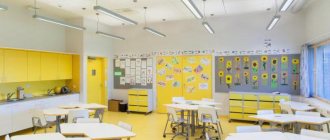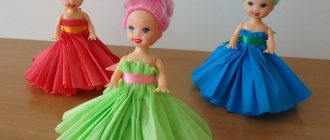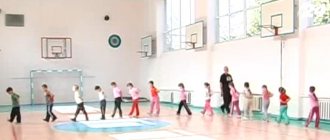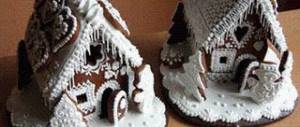Textile materials made from chemical fibers
Lesson plan for
the second generation Federal State Educational Standard LLC in 6th grade
(
Home management technology. 6th grade: textbook for students of general education institutions / N.V. Sinitsa, V. D. Simonenko. -M.: Ventana - Graf, 2020.)
Technology teacher at MBOU “Gymnasium No. 1 of the Bryansk region” Golubkova Irina Dmitrievna
Lesson 2 1
Textile materials made from chemical fibers and their properties.
The purpose of the lesson
: familiarization with the types and properties of chemical fibers and fabrics made from them; introduction to nonwoven materials; developing the ability to determine the composition of a material based on its properties; formation of skills in educational and research activities.
Learning Objectives
:
- To familiarize yourself with the technology of producing textile materials from chemical fibers.
- Give a general idea of the types and properties of fabrics made from chemical fibers.
- Give a general idea of the types and properties of nonwoven materials made from chemical fibers.
- Gaining research experience.
- Inform about operator professions in the production of chemical fibers.
Development
: to promote the formation and development of students’ cognitive interest in the subject.
Education:
create a culture of communication when working in a group.
Lesson type
: lesson in learning new material
Forms of work for students
: individual, collective, group.
Didactic teaching aids
: analogue models of design sewing work; collection of artificial and synthetic fabrics; collection of nonwoven materials; video materials; technology textbook, workbook.
Basic Concepts
: chemical, artificial, synthetic fibers, padding polyester.
| Personal results | Subject results | Meta-subject results |
| The desire to improve your skills; promote speech development, analyze your work, highlight the main thing, compare your work with the work of your classmates. Formation and development of cognitive interest in the subject “Technology” | Understanding and defining concepts: artificial and synthetic fibers, blended fabrics, adhesive pads. Participate in the collective creative activity of performing practical work. | Regulatory: planning your own activities, assessing the quality and level of assimilation. Cognitive: extracting the necessary information from a conversation or story. Development of an activity algorithm. Communicative: educational cooperation (the ability to negotiate, distribute work, evaluate one’s contribution to the result of common activities). |
During the classes
| № | Lesson steps | time | Purpose of the stage | Teacher activities | Student activities | UUD techniques |
| 1 | Organizing time | Student activation | Greetings to the class. Getting ready to work. | Greeting from the teacher. I control readiness for the lesson. | Personal : mobilization of attention. Regulatory : goal setting Communication : planning educational cooperation with the teacher and classmates. | |
| 2 | Setting the goals and objectives of the lesson. Motivation for students' learning activities. | I create conditions for the emergence of an internal need for inclusion in educational activities. | Formulation of the problem. Launch of a creative project on the topic “Creating garments”. When completing the project, students must learn how to make shoulder patterns with one-piece sleeves, design and sew clothing. One of the conditions for good clothing is the right choice of fabric. | Formulate the purpose of the lesson by defining the boundaries of knowledge and ignorance. They draw up a plan to achieve the goal and determine an algorithm of action. | Regulatory : goal setting, planning. Cognitive: general educational - logical - problem solutions, Construction of a logical chain of reasoning, proof, putting forward hypotheses, their justification. Communicative: proactive cooperation in searching and selecting information. | |
| 3 | Updating knowledge | Identify the level of knowledge and systematize it | I suggest answering the questions: What is any fabric made of? What is the raw material for obtaining first thread and then fabric? What plants do fiber come from? Are all fabrics made from plant fibers? | They answer questions and discuss them. Participate in the discussion of problematic issues, form their own opinions and give reasons for them. | Personal: awareness of your capabilities. Regulatory : ability to regulate one’s actions; Communicative: planning educational collaboration with the teacher and peers; Cognitive: logical - analysis of objects in order to identify features. | |
| 4 | Primary assimilation of new knowledge | Organize a meaningful perception of a new topic | I encourage students to provide a theoretical explanation of facts. Introducing chemical fibers. I demonstrate collections of artificial and synthetic fabrics and talk about their properties. I introduce adhesive gasket materials. | They participate in the conversation, formulate conclusions, and make notes in the RT. | Cognitive: extract the necessary information from what you listen to, structure knowledge. Communicative: engage in dialogue, express your thoughts with sufficient completeness and accuracy. Subject: give definitions to new concepts of the topic, name the stages of the sequence of fabric production. | |
| 5 | Primary knowledge test | Arouse an emotional mood and cognitive interest in the topic | Completing task 14 from workbook and laboratory work No. 5 “Studying the properties of textile materials made from chemical fibers” from the textbook | Fill out the table in RT. Teacher's assessment and comments. | Regulatory : establish a sequence of actions to complete a task. Communicative: listen and hear the interlocutor Cognitive: apply acquired knowledge when performing work. | |
| 6 | Primary consolidation | Ensure meaningful assimilation and consolidation of knowledge | Completing paragraph 2.3 of task 14 from RT: use a scrap of fabric to create a collection of fabrics from non-woven materials in the annex to RT. | Carry out educational activities according to the planned plan, justify the choice of their decision. Explain, formulate, analyze. | Regulatory : control, assessment, correction Cognitive: general education - the ability to structure knowledge, Choosing the most effective ways to solve problems Communicative: organize educational interaction in a group | |
| 7 | Control of assimilation, discussion of errors and their correction | Identify common mistakes and gaps in knowledge and skills, eliminate them and improve them | I invite students to talk about the results of their work. Consults, advises, helps. I teach methods of self-control and performance assessment. The ability of students to independently find and correct errors and determine the degree of success. | Present the results of independent work, They exercise control, formulate difficulties and carry out corrections independently, and adequately perceive the teacher’s proposal for correcting errors. | Regulatory : control, correction, awareness of what still needs to be learned, awareness of the quality and level of mastery of the material. Personal: self-determination Communicative: behavior management - control, correction, evaluation of actions | |
| 8 | Homework information | Provide students with goals, content, and ways to complete homework. | Three levels of homework: - standard minimum - increased — creative | Recognize the variability of homework | ||
| 9 | Summing up the lesson | Provide qualitative assessment of the work of the class and individual students | I organize reflection on learning activities in the classroom. What new did you learn in the lesson? What new concepts did you learn today? Where can you apply the acquired knowledge in practice? What difficulties did you encounter? Give an analysis of your activities. I control, draw conclusions, and give grades for the lesson. | Personal: awareness of the importance of teaching the subject Regulatory : planning further activities Cognitive: ability to structure knowledge and give self-assessment Communicative: listening and dialogue skills | ||
| 10 | Reflection of activity | Initiate student reflection on their psycho-emotional state, motivation for their activities and interactions with the teacher and classmates | I invite students to formulate their answer in the form of a telegram, SMS message, etc. |






